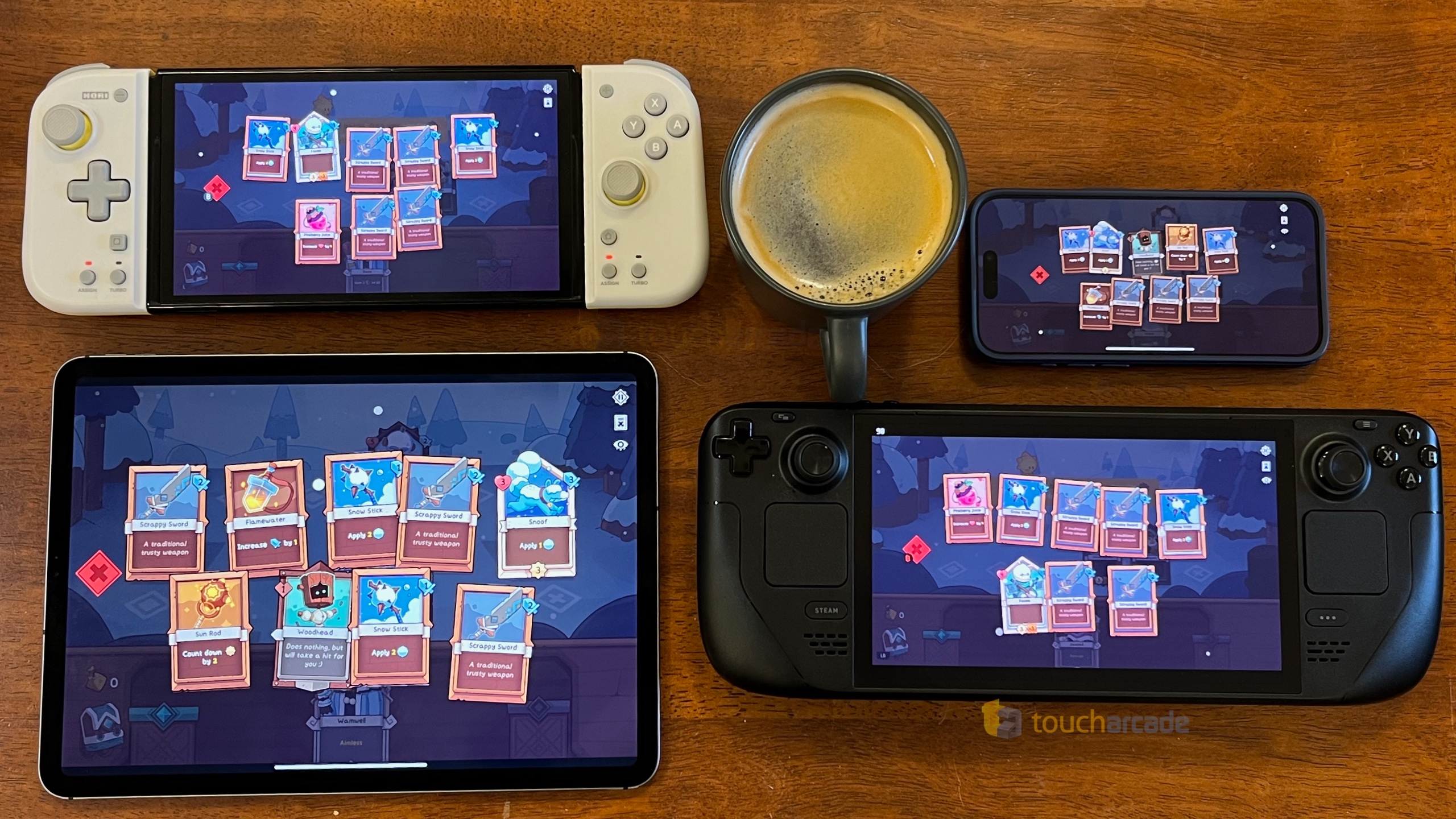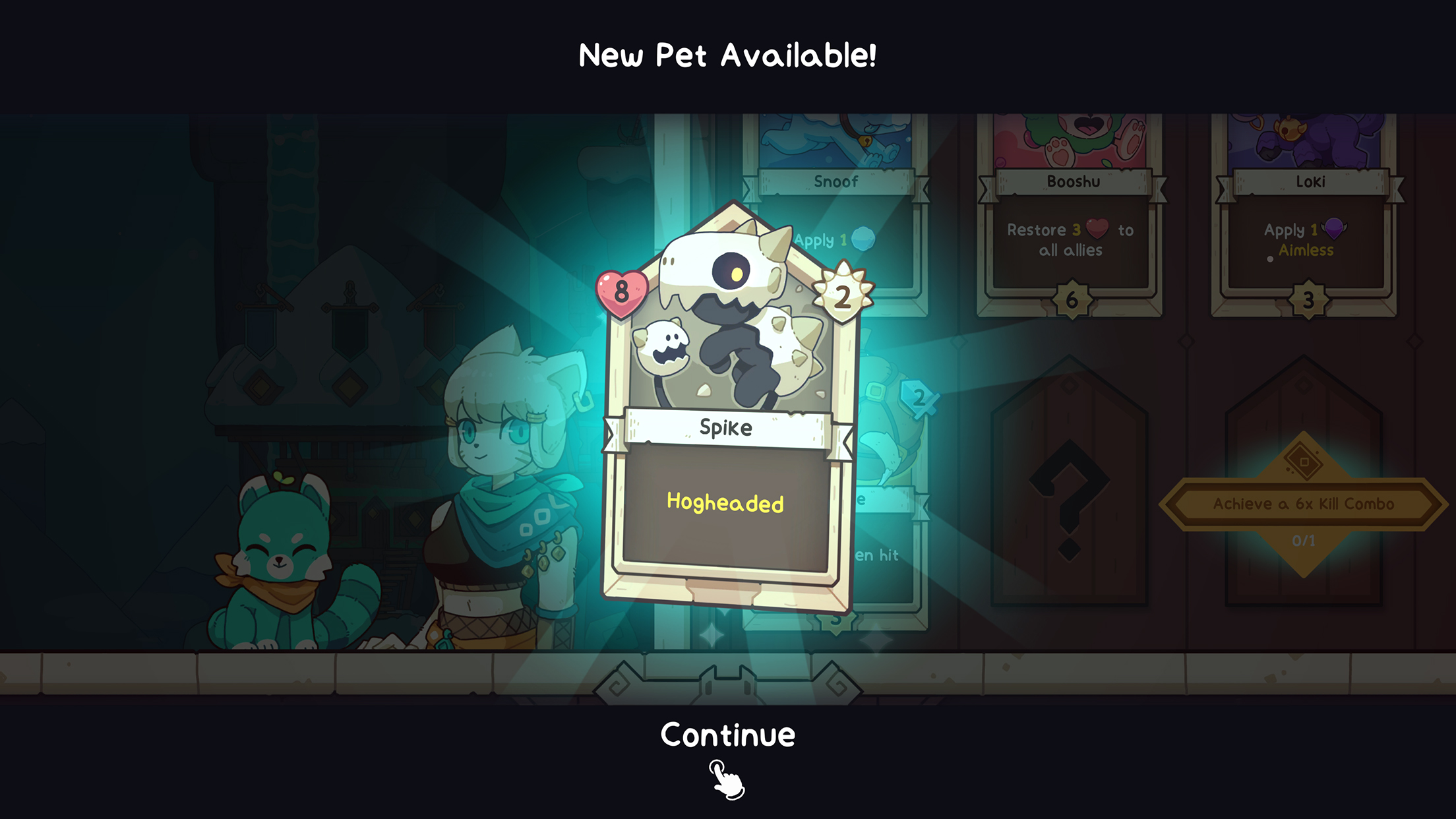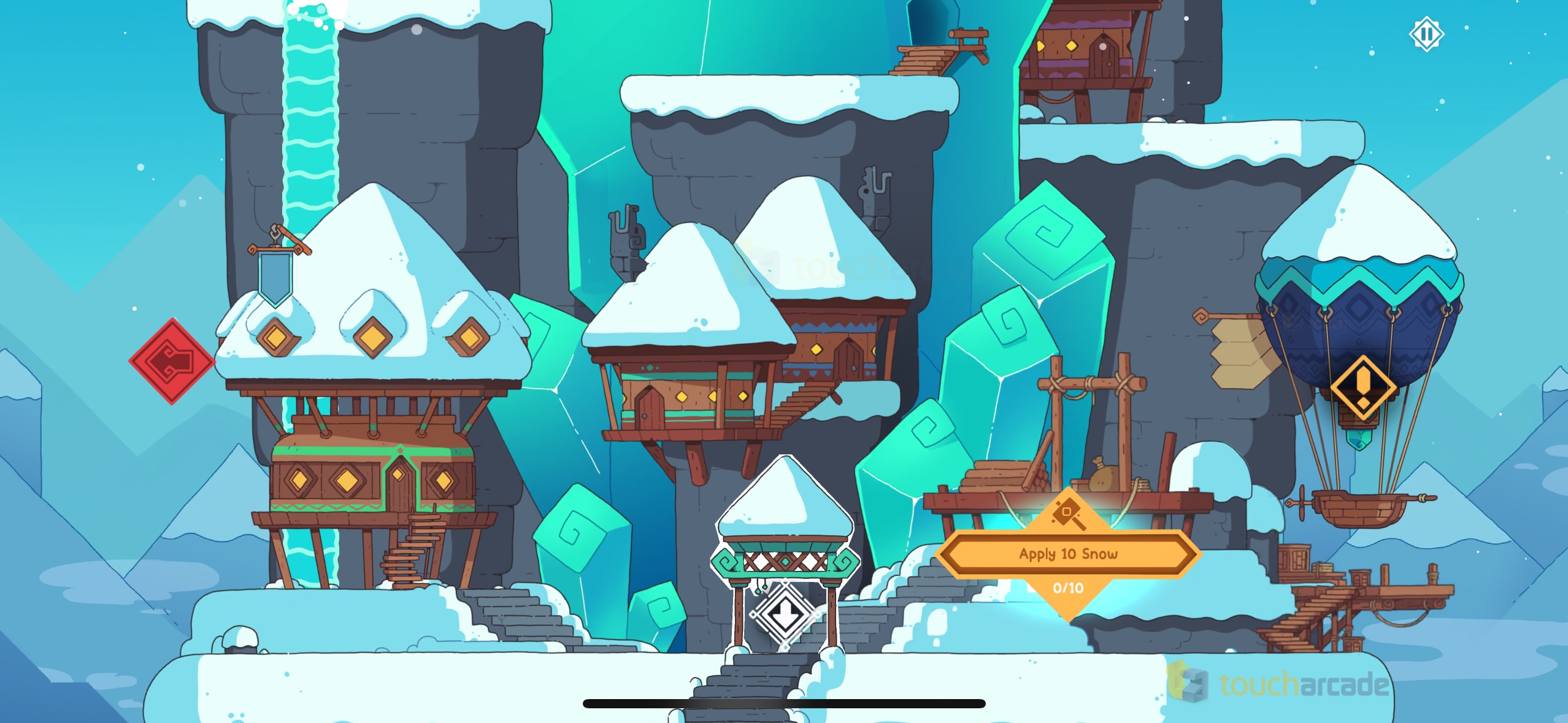 Here on TouchArcade, we try to cover the best games each week and highlight our favorite as the Game of the Week each week. Jared’s Game of the Week sometimes features a game we’ve reviewed or will review as well. This basically tells you that the game in question was good enough to not only get our coveted Game of the Week feature, but also was interesting enough to have us write about it as a full review. This is where the unique roguelike deckbuilder Wildfrost (Free) comes into the picture. Both Jared and myself have been playing it, and enjoying it. In fact, I had access to it a bit before launch, but it took me a bit to not play Wildfrost like I play other games I’ve been used to in the genre. I’ve also been playing it on multiple platforms which I will cover later on in this review.
Here on TouchArcade, we try to cover the best games each week and highlight our favorite as the Game of the Week each week. Jared’s Game of the Week sometimes features a game we’ve reviewed or will review as well. This basically tells you that the game in question was good enough to not only get our coveted Game of the Week feature, but also was interesting enough to have us write about it as a full review. This is where the unique roguelike deckbuilder Wildfrost (Free) comes into the picture. Both Jared and myself have been playing it, and enjoying it. In fact, I had access to it a bit before launch, but it took me a bit to not play Wildfrost like I play other games I’ve been used to in the genre. I’ve also been playing it on multiple platforms which I will cover later on in this review.

Winter isn’t just coming. It is here, and you need to banish it as you take on the Wildfrost with the help of Snowdell and its survivors in deep, strategic, and mechanics that subvert your expectations from the genre. Looking at screenshots from Wildfrost will lead you to believe it is similar to Slay the Spire or other games, but it plays very differently. I usually like learning by experience when I play a roguelike or deckbuilder, but given how much Wildfrost changes things up, I realized that wouldn’t work and I paid attention to the tutorial messages quietly after a minute into it. Wildfrost introduces many mechanics very quickly, and it does all of this while not following other games in the genre. Mechanics you’d expect, play out differently here or just don’t exist. Wildfrost feels like it has a lot of leeway for players, but you kind of need it with how hard the bosses hit you early on.
Wildfrost is a deckbuilder, and with it comes many card types, flavor text, and combat mechanics that you learn over time. After choosing a specific hero, you are thrown into the fray, and learn how positioning on the combat grid, counter (indicated below each card), interactions between cards after the countdown is over, and stats matter. The countdown mechanic is what dramatically changes how you will play because you now have to think multiple moves ahead rather than just one or two when you play cards. This can result in things feeling like a waste of time if you try to execute a specific set of actions but get destroyed by a new powerful enemy that appears after a wave, but there is always next time.

The first few runs felt relatively straightforward, but were a lot more challenging than I expected for the bosses. You will die a lot as you improve, but the progression in the game, also different to other roguelikes, makes every run feel different enough, and you end up working towards different goals because the game wants you to do different things to build up the town. Wildfrost also has a daily challenge mode, and I usually enjoy these more than the game after getting used to the mechanics. If you hate RNG, you might not enjoy Wildfrost, but I still think you should try the game for free before deciding.
Building the town lets you unlock facilities to help with future runs, spice things up, and basically keeps adding more ways to enjoy the game. I still remember Wildfrost being announced and released for $20 on Switch and Steam, and how some folks thought it was priced that “high" (it really wasn’t high) because of the visual polish and production values. Having played it, I think the asking price was too low already for how good it is and how much it includes, but the mobile asking price makes it an absolute no-brainer, if you click with the mechanics. This isn’t as big of a gamble though, since Wildfrost is a free to try game. If you end up playing it and enjoying what’s on offer here, you will enjoy the full game, but be prepared for a massive increase in challenge over what’s available for free.

On iOS, Wildfrost has full controller support in addition to sporting excellent touch controls. I usually play deckbuilders with touch controls only, but was curious to see how it felt with a controller. If you’re used to Wildfrost on other platforms, you will feel right at home with a controller here. I used my DualSense and 8BitDo controllers to play on iPad, and the game displays Xbox button prompts regardless. It automatically switches between touch and button prompts depending on your input. Wildfrost’s iOS port is so good with its visuals, performance, and interface, that it really makes Slay the Spire feel even worse on mobile at least. This is a superb and responsive conversion.
Visually, Wildfrost looks fantastic. I always loved the colorful aesthetic and animations when it was revealed, but they absolutely shine on modern iOS devices. Wildfrost has fullscreen support on my iPhone 15 Pro, but on iPad Pro 11" (2020), it has small bars on the top and bottom. I hope this can be adjusted in a future update. On the performance side, Wildfrost has three frame rate target options on iOS: 30, 60, and 120. I set it to 120 on both my devices. I was glad to see this available unlike in Slay the Spire.

I had access to the full version of Wildfrost on Steam Deck as well as iOS, and I found myself playing it a lot more on iPad than Steam Deck. It plays well on both, but I just enjoy these games on iPad a lot more. If you do want to play on your PC or monitor, the Steam version has unlimited frame rate support. I had the Switch demo installed, and the developers did a very good job with that version as well, but I don’t see myself bothering with it on Switch outside a potential physical release for collection. Right now, the iPad and iPhone versions are definitely my favorites.
While the visuals and animation work in Wildfrost is amazing, I want to highlight the audio design as well. The sounds and the score by Paul Zimmermann are perfect complements for the colorful aesthetic. The way the music changes over the course of a round and through the game is really great. You don’t usually see this much care put into the presentation of a deckbuilder. I’m also glad Wildfrost is getting a vinyl soundtrack.

Right now, my only real issue with Wildfrost is the steep difficulty curve. Don’t let the visuals fool you into thinking this is some calm and relaxing experience. It will challenge you, and keep things going non stop until your next run. I love the unique take on the usual mechanics we see in deckbuilders and roguelikes, but think the difficulty could be balanced better. Basically, regardless of my complaints with the difficulty curve, Wildfrost is fantastic.
I know Wildfrost will not be for everyone, and I’d have that caveat with my recommendation, but it is a “free to try" game on iOS, so there’s no real reason to not download it and give it a shot. I think it is more than worth its asking price on iOS, and it is immediately one of the best mobile releases of 2024 so far. While I am glad I finally played it, I’m annoyed I wasn’t obsessing over it last year when it debuted on Switch and Steam. I have rectified my mistake at least with this new port. Go download Wildfrost right now.